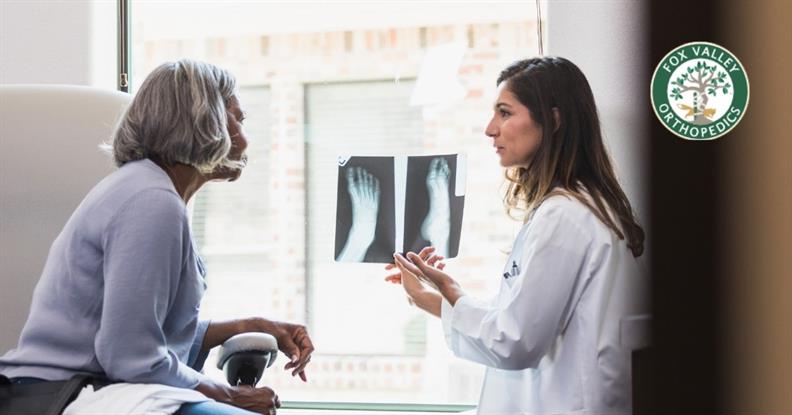Transforming Knee Surgery with Robotic Precision
- Category: Knee Surgery
- Posted On:
- Written By: Fox Valley Orthopedics
.jpg)
A Future of Precision and Comfort
Think about how much your knees support you every single day. From standing up to chasing after your goals, they do it all. But what happens when pain and stiffness start slowing you down? For many, the solution lies in advancements that merge skill and cutting-edge technology to bring relief and mobility back into focus.
Robotic Technology in Orthopedic Surgery
Technology has changed how surgeons approach knee replacement. Robotic-assisted surgery allows for a level of precision that traditional methods simply can’t match. Surgeons use advanced imaging to create a 3D model of the knee prior to surgery. This ensures every move during the procedure is planned, measured, and executed with accuracy. The blend of technology and expertise reduces errors and creates better overall outcomes for patients.
Unlike traditional techniques, robotic systems act as a guide for surgeons, helping place the implant exactly where it’s supposed to go. This can make recovery easier and improve how well the new knee works over the long term.
How Robotic Systems Work
Robotic-assisted knee replacement relies on some state-of-the-art tools to get the job done right. The robotic arm, controlled entirely by the surgeon, follows the pre-planned map of the procedure. It’s not autonomous; the surgeon is in charge every step of the way. The system provides real-time data, adjusting movements as needed to work seamlessly with the patient’s anatomy.
This level of control ensures sub-millimeter alignment precision, which greatly reduces complications like misalignment or wear on the implant. The result? A procedure tailored to each patient that promotes faster recovery and long-lasting joint health.
Who Benefits from Robotic-Assisted Knee Surgery?
Determining Eligibility
Not everyone needs robotic assistance, but for those with severe knee damage or arthritis that hasn’t responded to physical therapy or medications, it can make all the difference. Typical candidates are people in good overall health who want to get back to an active lifestyle. Patients are carefully evaluated to make sure this approach aligns with their needs.
Evaluations Before Surgery
Pre-surgery assessments are thorough, often involving advanced imaging like CT scans to map the structure of your knee. This step ensures a fully customized surgical plan so that everything—from the incision to implant placement—is optimized for success.
The Benefits of Precision
Improved Accuracy and Alignment
Robotic-assisted knee surgery shines when it comes to precision. Every cut, alignment, and implant placement is fine-tuned to fit your knee perfectly. This accuracy is critical not just for the success of the surgery, but also for the long-term durability of the implant. A properly fitted knee means fewer complications and better function over time.
Recovery Made Easier
Because robotic systems reduce trauma to the surrounding tissue during surgery, you may experience less pain and swelling afterward. Many patients find they are able to start physical therapy sooner, speeding up the recovery process. Studies have shown that those who undergo robotic-assisted knee surgery often report higher satisfaction and faster returns to regular activities compared to traditional methods.
From Preparation to Results
A Customized Surgical Journey
Your path toward a robotic-assisted knee replacement starts well before the surgery itself. Advanced imaging provides a detailed map of your knee, allowing for a tailored plan that caters to your anatomy and lifestyle. During the procedure, your surgeon utilizes these maps and the robotic arm to ensure the highest level of precision, adjusting as needed for your unique situation.
Patient Experiences
Many patients share stories of how robotic-assisted surgery has improved their lives. Faster recovery times and the ability to move without pain again are common highlights. The personalized care and advanced technology combine to create a positive, life-changing experience for most individuals who go through this process.
The Challenges and the Future
Addressing Cost and Accessibility
While robotic-assisted surgery comes with incredible benefits, it’s important to consider cost and accessibility. The technology involved makes it more expensive than traditional methods, and insurance coverage can vary. Still, the improved outcomes often make it an investment worth considering. Some centers, like Fox Valley Orthopedics, work to ensure accessibility through insurance partnerships and financial planning options.
The Bigger Picture in Robotics
Orthopedic robotics shows no signs of slowing down. Future advancements could make procedures even faster and more efficient while expanding into areas such as hip replacements or spinal surgeries. The potential for fully customized implants and even autonomous surgical systems is on the horizon, offering exciting possibilities for patients and medical professionals alike.
Progress Backed by Expertise
Knee pain doesn’t have to limit your life. Robotic-assisted knee replacement combines the best in technology and surgical skill to create personalized, precise outcomes. At Fox Valley Orthopedics, our experienced team is at the forefront of these surgical advancements. We’re here to help you regain mobility and return to doing what you love.
Call us today at (630) 584-1400 to learn more about how our care can support your health and well-being.



